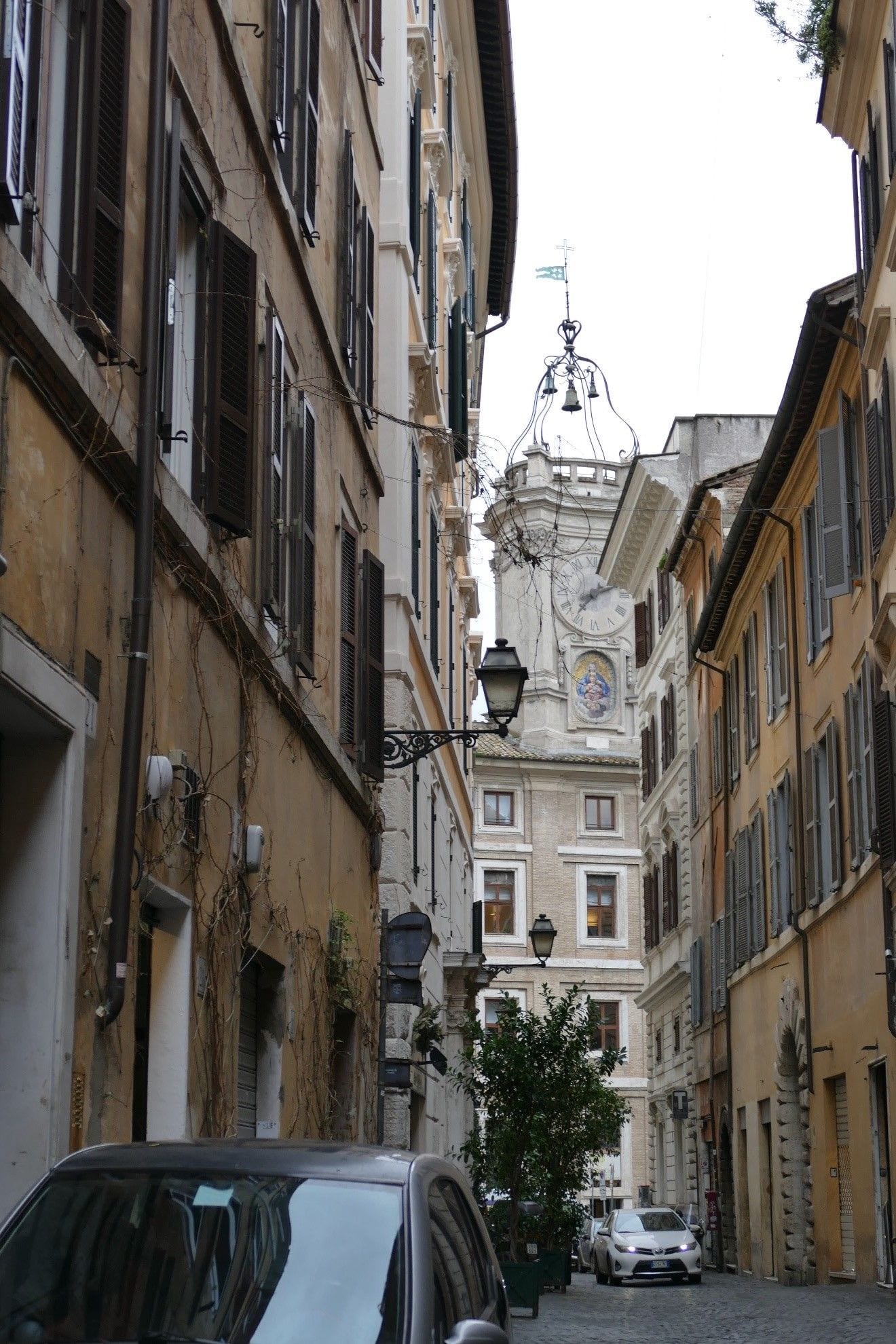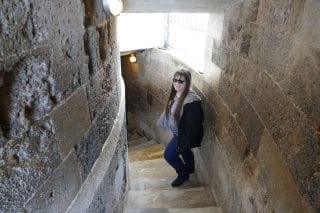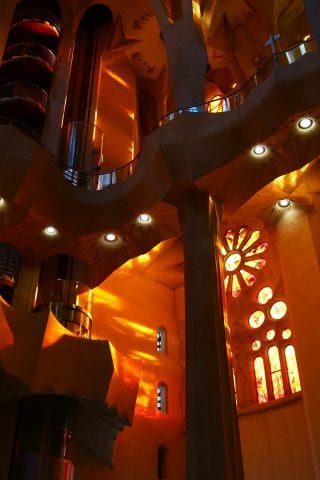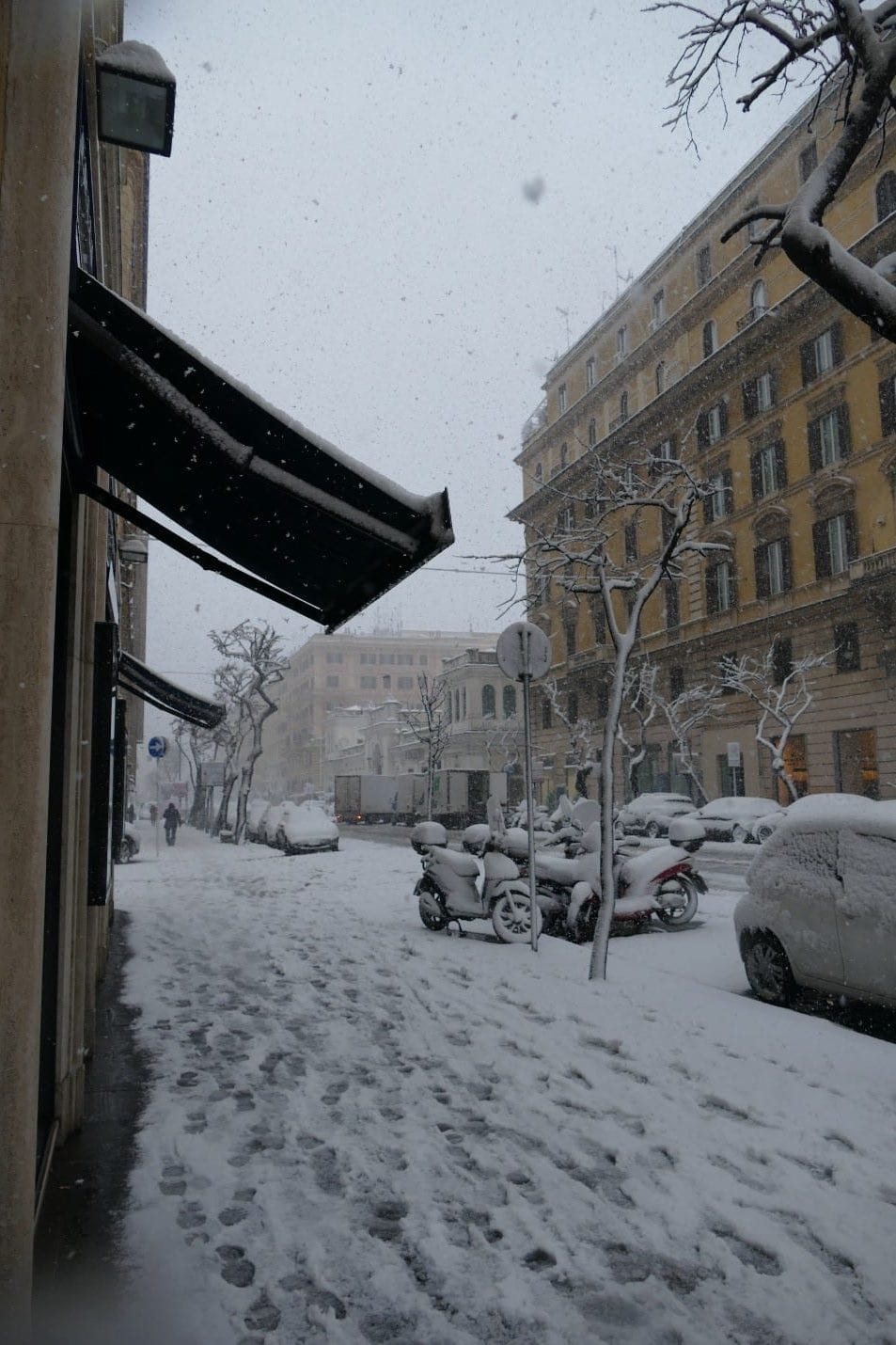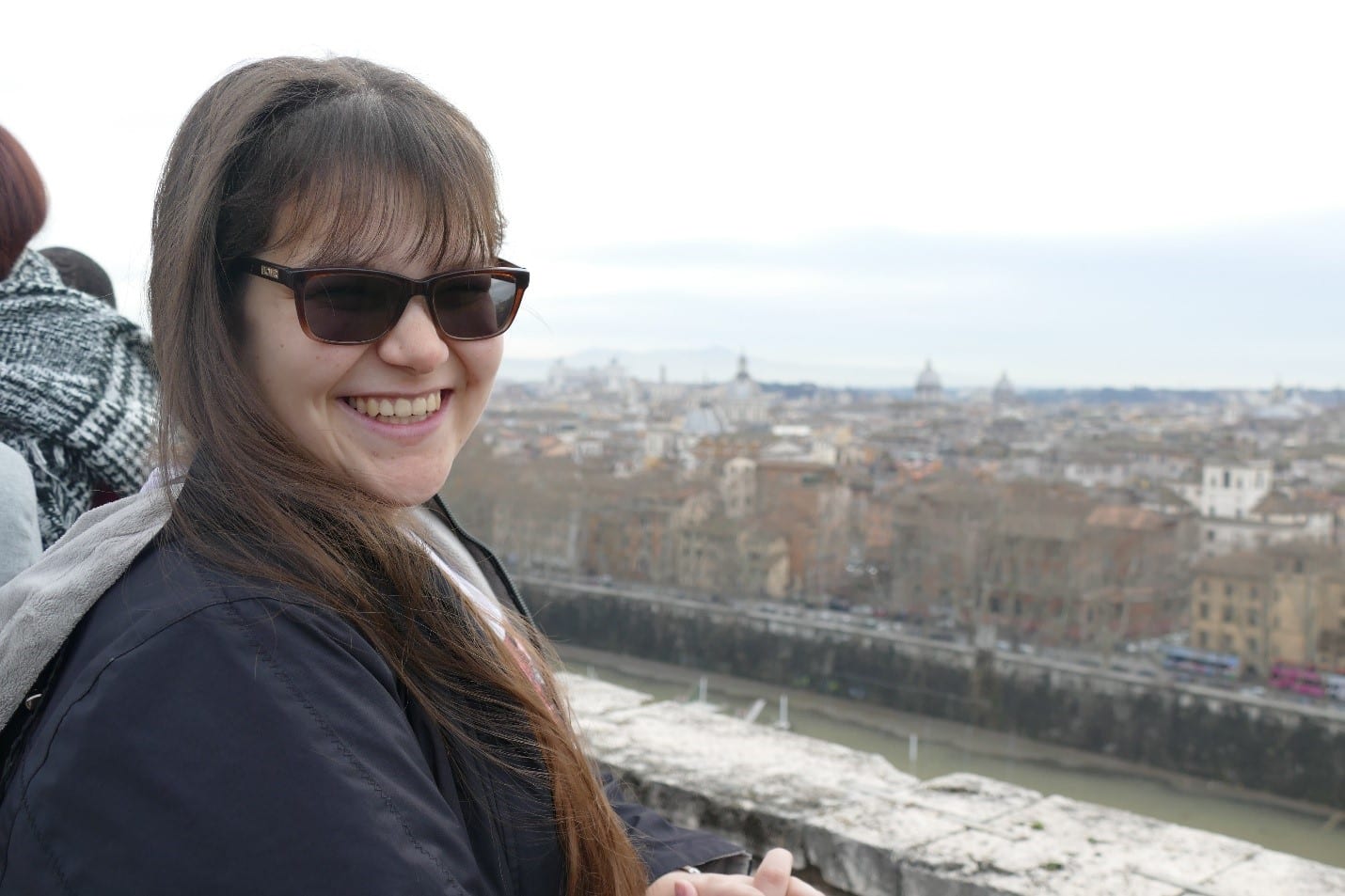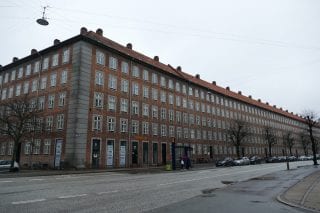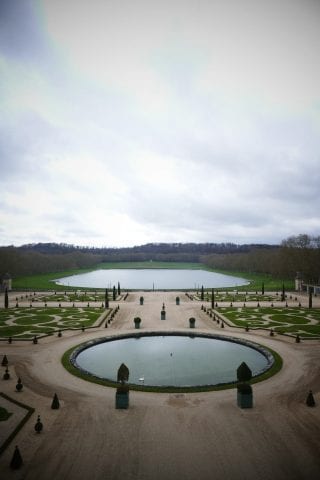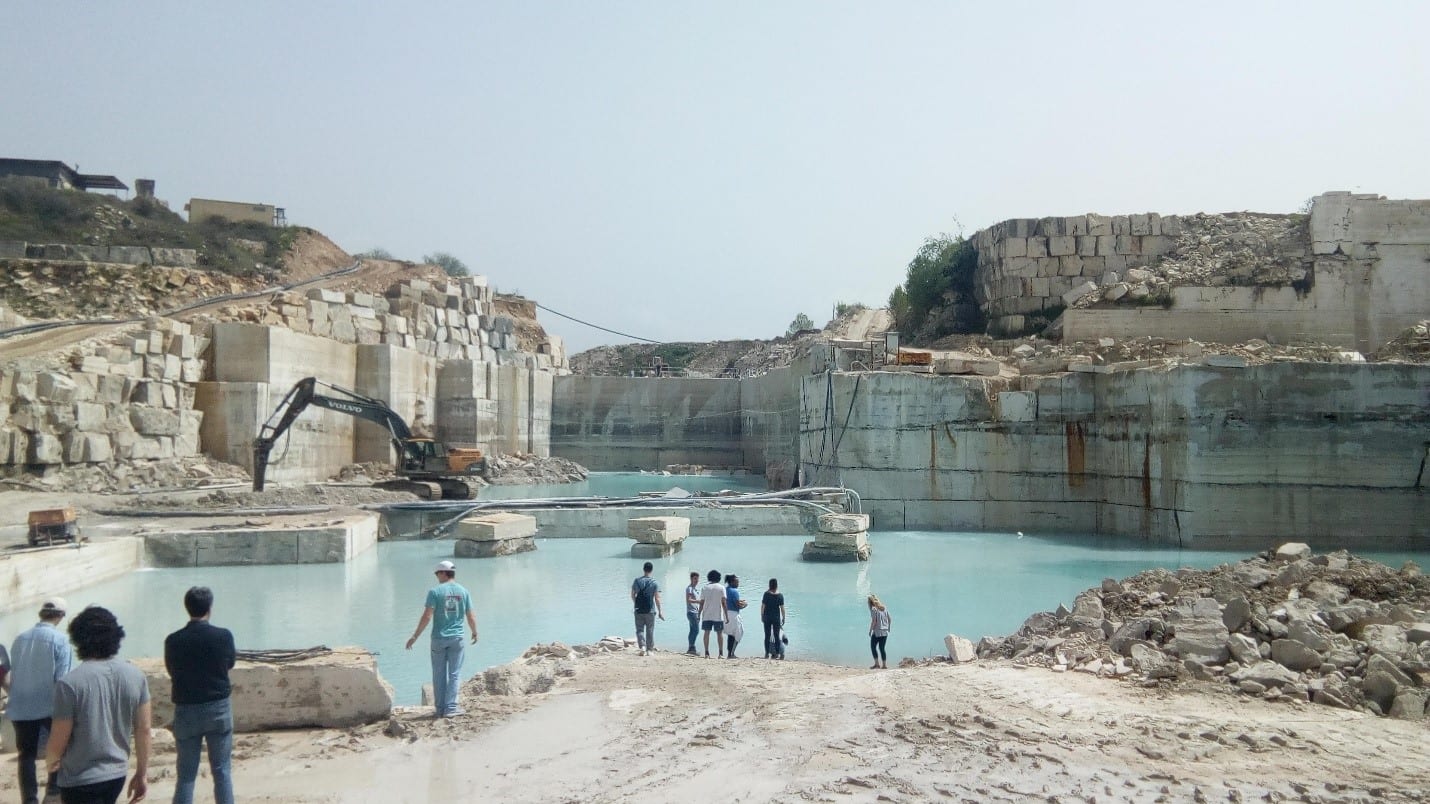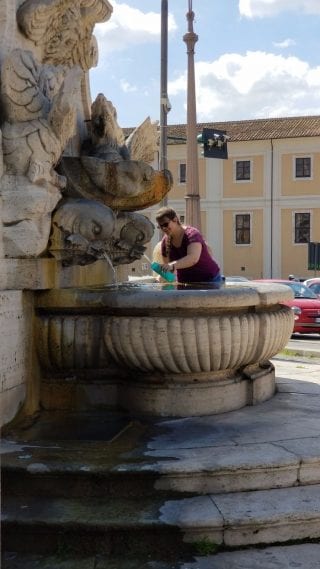January: Day 23/125
Ciao!
The first week of the semester is always introduction week, so allow me to introduce myself. My name is Tamsan, I’m an architecture student who has decided to study in the city that architects and others have pilgrimed to for centuries: Rome.
It takes 24 hours of traveling to go from a small town in Arkansas to a city of millions halfway across the world, but my excitement never faltered. On the trip over the Atlantic I met a student from the University of Minnesota. She is studying abroad this semester in Spain and we shared each other’s excitement for what our futures held. We sat next to each other on the plane, and waited together when we both missed our connecting flights. But soon we shared contact info and headed our separate ways.
The first week in Rome was the easiest with no courses, but the most difficult to adjust. The University of Arkansas Rome Center had faculty giving us tours of the well-known highlights of Rome, such as the Colosseum and St. Peter’s Basilica, in between the necessary orientation PowerPoints to answer every question we might have. It’s always the small differences between cultures that shock you the most, like how Italian stores never seem to have change, or when asking to pass by someone you don’t say “mi scusi” for excuse me, but “permesso” for permission to pass.
We finished the week strong with the Via Papalis, the historical route Popes would take between St. Peter’s Basilica, the location of the papacy, and the Basilica di San Giovanni Laterano, the seat of the bishop of Rome (who is also the Pope). I recommend the walk, it takes a few hours but it passes by many historical and architecturally intriguing sites. Historically the Pope would then be carried back to St. Peter’s, but thankfully our 21st-century selves were able to take the metro back after enjoying some delicious Italian pizza. The focus for our studio class in the first few weeks will be analyzing and re-representing the Via Papalis in the context of a modern Rome.
The classes began in the second week. My required architecture classes include a design studio and “Architecture of the City,” for which the first class consisted of us heading to the Roman Forum and drawing for a few hours. I’m sure our professors have a goal for us over the semester, but right now I’m just taking in the fact that I’m actually in Rome. For one of my electives I chose “Modern and Contemporary Rome,” which seems to be an opportunity to walk large portions of the city sketching intensely and listening to our professor explain the historical context of every material and location; I’m completely fascinated! I also chose to take an elementary Italian class. I have only ever taken Spanish before and I know myself well enough to know I’ll never be able to pick up the language without a little help from a professor. I would recommend to anyone to learn a little of the language where you’re studying. You will feel more confident both walking down the street and in the aisle of your local grocery store.
Overall, so far so good. I’m getting used to the people and to living in such a large city. Sometimes when I first wake up I forget I’m in Italy, but once I step outside I remember I’m in a whole new place and ready to take on brand new adventures!
February: Day 58/125
Viaggio!
This has been a month of traveling. It took nearly all of January to feel like I start to understand Rome and now I’m heading to new cities and countries! My first trip outside of Rome was a two-hour train ride to Pisa. My friend and I climbed the leaning tower and admired the gorgeous cathedral, but we also strolled along the river and found a beautiful park within the remnants of an imposing fortress. Our class visited Tivoli, a town not far from Rome but somehow seems to be in the remote Italian countryside. Here we visited the ruins of Hadrian’s villa and the grand Villa d’Este. Hadrian’s villa allowed us the opportunity to experience the remnants of the Roman Emperor Hadrian’s retreat from the 2ndcentury C.E. While Villa d’Este is a 16th-century Italian Renaissance villa, it has gardens and famous fountains that are wonderfully preserved.
Our Architecture of the City class has begun to take on more meaning. Our current focus is “opening the third eye;” although it’s difficult to explain, it essentially means drawing what we see, not what we think we see while sitting in Trajan’s Forum. When we look at an arch, we try not to draw the space the arch is making but the shadows that describe that space. We haven’t quite got the hang of it yet, but I’m glad we’re being pushed to think in this new way that we don’t normally get to back in Fayetteville.
At the Rome Center, classes are usually held Monday through Thursday with three day weekends that are either free weekends (for us to travel) or working weekends (for us to work on our program’s main course load, studio). During one of these free weekends I visited Spain with another friend. We were able to easily take trains from Barcelona to see Gaudi’s work, including the famous Sagrada Familia, an absolutely beautiful Basilica that has been under construction for over a century. It is filled with beautiful colors from the sunlight that streams trough the stained glass windows. We also traveled to Valencia and saw the City of Arts and Sciences, designed by Santiago Calatrava, whose mastery of engineering and sculpture creates breathtaking contemporary architecture. Our last stop was the Mosque of Cordoba, which, although now a cathedral, retains its hypostyle hall and ornate Moorish architecture from the 8thcentury.
This month also marked my first trip alone when I traveled to Athens. Visiting a country alone for the first time was almost as intimidating as the climb up the Acropolis. You never forget your first view of that rocky outcross that towers above the modern city, holding thousands of years of historical significance in what remains of its ruins. As I climbed the acropolis I began to understand just how much this study abroad opportunity has begun to change me. Seeing the other side of the world is not about having a story to tell your friends and family, but understanding the people who have come before you; their cultures, their habits, their livelihood is connected in some way to the lives we live right now. Understanding who and what has come before you is essential for any major, but especially for architecture.
We’ve been told the spring semester in Rome is the rainy season, but we were never warned of snow! I wanted to see the city covered in white; unfortunately, I hadn’t brought the right shoes. Two snow days later we were back to the regularly scheduled routine. My advice: be prepared for anything and don’t stress if your plans go awry; enjoy your brief time on the other side of the world!
March: Day 89/125
Primavera!
Rome is the “City of Domes,” and I’m seeing why more and more every day. Our professors gave us some of the best advice for exploring the city: “go through every open door.” In Rome I often stumble upon places I’ve never heard of but now am completely captivated by. From the top of Castel Sant’Angelo to my daily “commute” across the Tiber and through the winding road of the historic center, I can always find someplace new to enjoy sketching.
My Modern and Contemporary Rome class is taking us from one end of the city to the other. Our professor has introduced us to a range of historical architecture as well as the best bakery and the best arancini place in the city. We have toured and sketched the neighborhoods of Trastevere and Testaccio, which have been shaped by Italy’s history since the country’s unification in 1871. Rome became the capital of Italy and a housing crisis occurred, which aligns perfectly with my interests and my honors thesis.
One thing that March always brings to college students everywhere is spring break, and for a student in Rome it is the perfect opportunity to reach farther and travel across Europe with a backpack and a passport. Many students use this opportunity to visit as many countries and cities as they can, but I knew from the beginning how I wanted to use my time. Given this unique opportunity to travel in Europe I decided to visit my father in London for the second time in my life. We have long kept in touch on the phone, but flights across the Atlantic are not in my budget, so studying abroad in Europe provided the perfect opportunity. I am thankful I was able to spend quality time with him in London. I was even able to visit Brighton, the town he spent much of his childhood in. While I was in Northern Europe I also visited Copenhagen and saw Fisker’s Hornbækhus, a social housing project that was construed in the 1920s due to the housing shortage after the First World War. The project demonstrates a number of great innovations for its time, including a very large inner courtyard garden that contributes to the complex now being a popular place to live.
The following Easter weekend I left the mass of tourists in Rome and headed to Paris and Versailles in France. Walking along the Seine I understood why Paris is known as the “City of Lights.” The Eiffel Tower’s light show was as dazzling as its architecture, its construction a structural revolution for the 1889 World’s Fair. I also had the chance to visit Versailles, which I studied extensively the semester before in my History of Landscape Architecture class. I spent the entire day in the gardens, able to view the flowing fountains and designed groves that I had studied back in Fayetteville. I would definitely recommend to other students, if they have the opportunity, to take classes that relate to where you want to study abroad/travel to; it makes it that much more fulfilling when you have previous knowledge about a place from a professor.
I must say after spring break I was mentally and physically exhausted from traveling. Thankfully final reviews crunch time is right around the corner and I’ll be staying in Rome for the imminent future.
April: Day 125/125
Grazie mille!
My Architecture of the City classes ended the semester with a visit to a local travertine quarry. The area had been quarried since Roman times for the construction of forums, temples and theaters. It was the first time the professors at the Rome Center had gone to a quarry with students, so everyone was excited for the visit. I believe it is essential to learn every aspect of architecture you can, and the quarry provided that experience and doubled as a beautiful day trip with the bluest water I’ve ever seen (the pumps that normally remove the water from the quarry were not working that day).
Our class also had a day trip to Ostia, which was the port city of ancient Rome, but now the coast has moved farther west. What remains of Ostia is ruins of a once-economically-flourishing port city, which we sketched while sitting in a well-preserved 2nd-century C.E. amphitheater. The sun in the Mediterranean is energizing but intense, and many of us came back that day with slightly sunburned skin. Note to future travelers: add sunscreen to your packing lists.
Our class decided to take on the Seven Churches Walk in Rome, a total of fourteen miles, on one lucky Friday. It was a great opportunity to see some of the outlying neighborhoods of Rome with our professors. It was a warm day, but thankfully there were numerous fountains along the way. I haven’t mentioned this yet, but one of the coolest things about Rome is that the water in the fountains is potable, so drink up!
For our final review in studio my partner and I presented our reimagined entrance to the Colosseum. The site was the Ludus Magnus, which is located just across the street from the Colosseum. Once the main training ground for gladiators, it is currently in ruins. We decided to use the site and the tunnel that connects the Ludus Magnus with the Colosseum to propose a new entrance with exhibition spaces and education facilities.
So now final review is done, finals week is here, and my flight leaves sooner than I can imagine. Thankfully my finals schedule is light and I’m squeezing in my last trips to Florence and Venice this week before I must say goodbye to Italy for hopefully not the last time. I’m happy to be heading back to Arkansas where I can share my experiences and adventures with my closest family and friends, but before I say goodbye, here’s my last bit of advice to those students who will follow:
When applying to study abroad they always say it will change you, you will grow. It may sound a little sappy…but it’s true. I know in the coming months I will look back at the opportunity and remember it fondly. I am so glad that the School of Architecture requires students to study abroad and would recommend the University of Arkansas Rome Center to students of any major. As a student there are a number of resources that can help you study abroad and I am so incredibly grateful for the support and scholarships I have received, especially from the Honors College, that have allowed me to make the most of this opportunity. If you’re reading this now and considering studying abroad, I highly encourage it. Find the unexpected, meet the unconventional and wander through cities that have stood for thousands of years; as J. R. R. Tolkien wrote, “not all those who wander are lost.”


